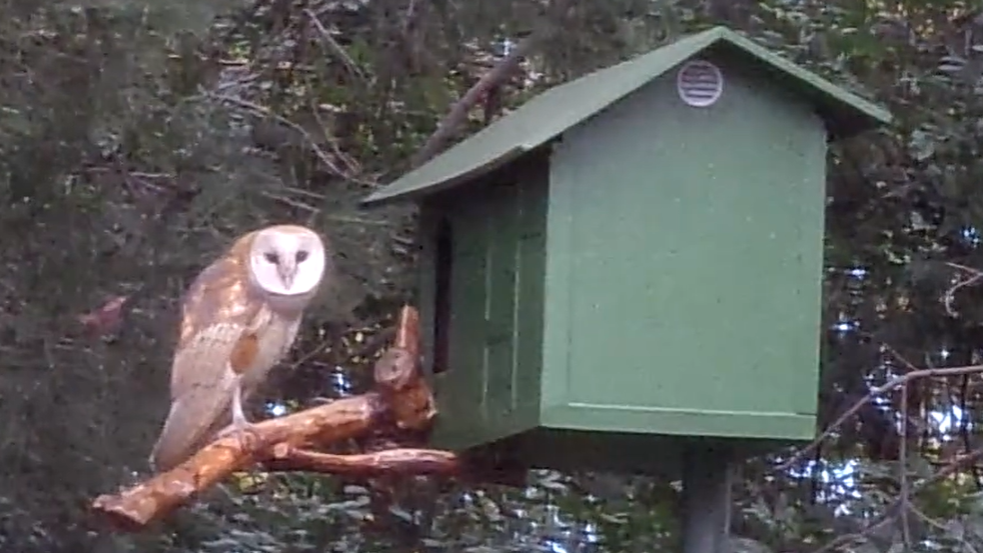Microwave exposure is harmful to birds.
The use of wifi cameras inside owl boxes (and other bird houses) is growing in popularity. Owl boxes are encouraged by wildlife experts to save owls from declining numbers due to environmental factors. However, the installation of wireless cameras inside owl boxes that connect with cell phones and other wireless devices, for research or pleasure, can undermine the survival of those same owls. Owl box owners install wifi cameras to watch live footage and make videos to share of owl activity, nesting and breeding, raising their young, etc. While entertaining, members of the public – and even wildlife and bird conservancies – seem to be unaware of the harm that close-range microwave radiation can subject owls (and other nesting birds) and their young to.
Consider giving the owls (and other nesting birds) a break! They do not exist for our entertainment alone and if we truly care for their welfare, we will find safer ways to view their activity, such as non-wifi cameras set up at a distance from the owl box or bird house.
Electrosmog pollution is one of the fastest growing forms of pollution on our planet. Let’s not add to the environmental stressors on owls and birds in our yards. We may also wish to consider reducing the dangers to our own loved ones, by reducing electrosmog pollution from wifi and wireless devices in our homes, vehicles, and on our property!
1. Factsheets on Wildlife and Wireless
A landmark research review by U.S experts of over 1,200 studies on the effects of non ionizing radiation to wildlife entitled “Effects of non-ionizing electromagnetic fields on flora and fauna” published in Reviews on Environmental Health found adverse effects at even very low intensities including impacts to orientation and migration, reproduction, mating, nest, den building and survivorship. (Levitt et al., 2021a, Levitt et al., 2021b, Levitt et al., 2021c).
(https://ehtrust.org/electromagnetic-radiation-wildlife-and-environment/)
2. Effects of NonIonizing Radiation on Birds
PMID: 2899470
DOI: 10.1016/0300-9629(88)90827-4
https://pubmed.ncbi.nlm.nih.gov/2899470/
Abstract
“With the ability to fly comes a greater probability of direct irradiation by nonionizing radiation. The effect of nonionizing radiation on birds is, therefore, of environmental significance. 2. Most biological effects of exposure to nonionizing radiation in avian species are a result of radiation-induced temperature increases. 3. The incubating avian egg provides a model to study nonthermal effects of microwave exposure since ambient incubation temperature can be adjusted to compensate for absorbed thermal energy. 4. Some studies have shown that exposure to nonthermal levels of nonionizing radiation affect a bird’s ability to recover from acute physiological stressors. 5. Although earlier research indicated that modulated radiofrequency radiation increased calcium-ion efflux in chick forebrain tissue, criticism of experimental techniques and contradictory results between related studies have made final conclusions elusive. 6. Birds have been shown to be able to reliably detect magnetic fields in both the field and laboratory. Some researchers have reported malformations in chicken embryos exposed to a sinusoidal bipolar oscillating magnetic field.”

Here is an example of a healthy, enjoyable family of owls living in an owl box in Southern CA, with no wifi cameras to harm them!


Comments are closed.